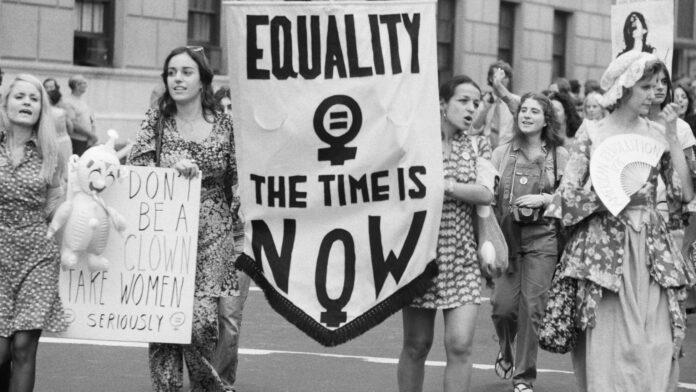In contemporary discourse, the intersection of women’s liberation and family values has emerged as a polarizing subject. While advocates for women’s rights herald the progress made in achieving autonomy and equality, critics often posit that such advancements have inadvertently undermined traditional family structures. This exploration delves into the nuances of these two concepts—women’s liberation and family values—examining the arguments presented by both proponents and detractors, and contemplating the broader implications of this complex relationship.
Women’s liberation in the latter half of the 20th century catalyzed a paradigm shift that redefined societal expectations and roles. Traditionally, familial constructs were predicated on gendered divisions of labor, with women primarily positioned as homemakers and caregivers. However, the feminist movements, spurred by the Women’s Rights Movement of the 1960s and 1970s, reframed these norms, advocating for women to pursue careers, education, and self-actualization beyond domestic confines.
This transformation brought forth discussions surrounding the concept of family values, which often encompass principles of stability, commitment, and nurturing environments for children. Critics of the women’s liberation movement argue that the quest for personal freedom has led to a decline in these values, thus destabilizing familial structures. Yet, a rigorous examination reveals a more intricate tapestry of how these movements have coexisted, intersected, and sometimes clashed.
At its core, the debate hinges on contrasting interpretations of what constitutes family values. For some, traditional family values are inextricably linked to heteronormative ideals regarding marriage and child-rearing, often situated within a historical framework that privileges specific family models. The critics maintain that the erosion of these norms correlates with the rise of individualism propelled by women’s liberation, thereby connoting social disarray.
However, this critique often neglects an essential factor: the evolution of the very definition of family itself. In many societies, families are increasingly pluralistic, embracing single-parent households, blended families, and same-sex partnerships. These changes reflect broader social acceptance of diversity in marital and familial configurations. Thus, rather than a binary conflict between liberation and traditionalism, the reality encompasses a spectrum that allows for multifaceted family dynamics.
A pivotal argument articulated by detractors of the women’s liberation movement centers on the perceived diminishment of parental involvement in children’s lives. Some posits that as women ascended in the workforce, their traditional roles as primary caregivers diminished, fostering an environment where children might experience neglect or a lack of familial bonding. This perspective invokes nostalgia for an idealized past, often overlooking the significant contributions women make to both the workforce and home concurrently.
Conversely, many proponents of women’s liberation assert that this shift toward dual-income households has not necessarily diminished the quality of familial relationships. Research indicates that families who embrace egalitarian partnerships often foster environments rich in communication and emotional support. Moreover, women’s participation in the workforce contributes to economic stability, enhancing the family’s capacity to provide for its members. The argument thus pivots to highlight that women’s liberation engenders a more equitable sharing of familial responsibilities, enriching the family unit rather than dismantling it.
The implications of these shifts are profound. Inclusivity resulting from women’s liberation advocates for a re-evaluation of family structures, where traditional binaries give way to an understanding that encompasses varied experiences. Families can be defined by love, support, and mutual respect rather than strictly by the mode of living or the adherence to historical customs. This paradigm shift not only endorses the diverse realities of contemporary families but also poses fundamental questions about the role of institutions in nurturing familial bonds in an evolving cultural landscape.
The rise of educational and professional opportunities for women has catalyzed significant economic advancements, which, in turn, have fostered environments conducive to children’s flourishing. Studies consistently reveal that when women are empowered financially, there are notable enhancements in child health metrics, educational outcomes, and overall family wellbeing. By embracing the dualities of women’s liberation and family values, society can cultivate conditions that support nurturing environments amidst changing dynamics.
Furthermore, a critical aspect worth addressing is the societal expectation placed upon women to navigate the dichotomy of career and family life. Women are often ensnared in a web of conflicting messages about success and fulfillment, leading to what some scholars term the “second shift.” This refers to the phenomenon where women, despite working full-time jobs, engage in substantial unpaid labor at home, including childcare and household management. Such dynamics can elicit feelings of burnout and inadequacy, raising essential questions regarding gender equity in domestic labor distribution.
If family values are to be truly representative of contemporary society, they must incorporate an understanding of the pressures faced by women striving for balance. Redefining these values to acknowledge the realities of shared responsibilities, emotional labor, and the importance of supportive partnerships can help in dismantling ingrained stereotypes surrounding gendered roles within families.
A retrospective examination of family values within the context of women’s liberation elucidates a need for dialogue, rather than a divisive stance. Cultural narratives must evolve to encapsulate the multiplicity of familial experiences, thereby fostering a comprehensive understanding of what constitutes a family today. Through this lens, women’s liberation can be perceived not as a force dispelling traditional family values, but rather as a crucial step in democratizing the family structure, allowing for greater diversification and enrichment.
In conclusion, the juxtaposition of women’s liberation and family values necessitates a nuanced understanding. While criticism may arise regarding the potential negative ramifications of these societal shifts, it is crucial to recognize that family itself is not a rigid construct but rather a dynamic entity capable of adaptation and growth. Empowering women should not be viewed as detrimental to family values; instead, it can complement and augment the richness of family life. For future discourse, it is imperative to advocate for perspectives that embrace diversity and equity, fostering environments where all family dynamics can thrive.





























